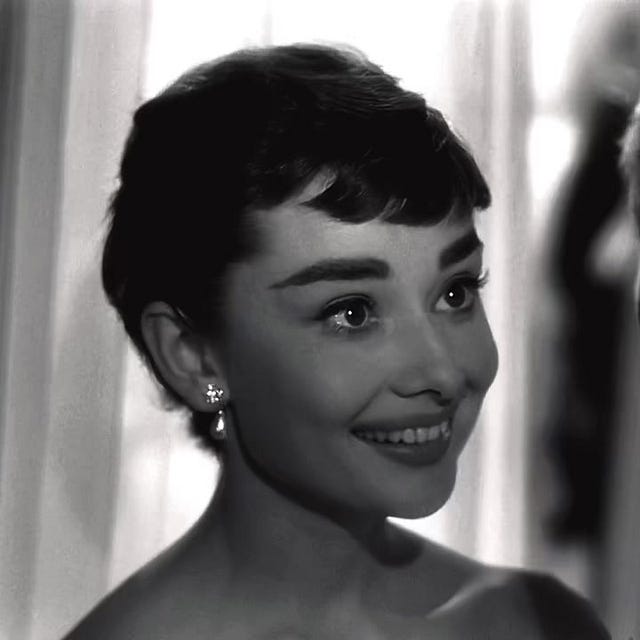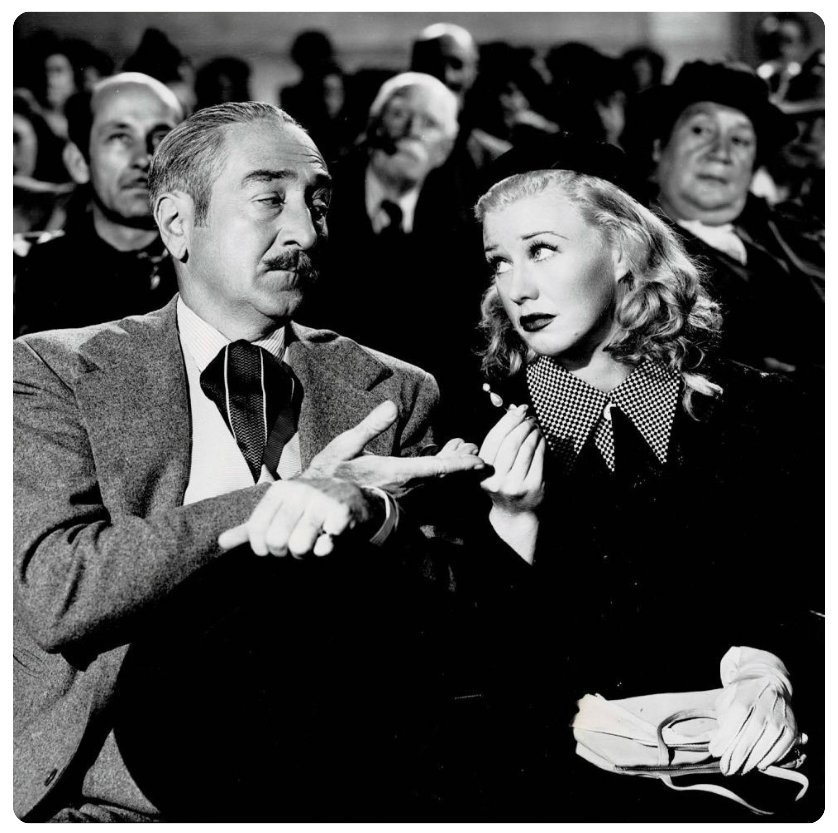I recently started reading This Was Hollywood by Carla Valderrama and it relit my flame for old Hollywood and, more specifically, the Golden Age. This hallmark period of cinematic history is typically considered to span the years of 1913 to 1969, and it boasts some of the most iconic and inventive films, actors, screenwriters, directors and producers, and musical scores. Although there were glaring inequities and issues with this day and age and the film studios that existed within it, I’ve always been fascinated by old Hollywood and its impact on American culture. I grew up watching The Wizard of Oz and Annie Get Your Gun (among many others), and fell into a trance every time I rode The Great Movie Ride and the Studio Backlot Tour at Disney’s Hollywood Studios, which was then Disney-MGM Studios. I’m not super well-versed in Golden Age films so in an effort to familiarize myself with them, I’m introducing (drum roll please)…It’s All Golden, a personal challenge to work through a variety of films from this specific era of cinematic history.
To start off this series, I watched three films (including a rewatch) that I knew I’d likely enjoy. All of them boasted one or more leading ladies that truly made the movie for me, and - as you’ll see below - I had a lot of fun researching bits and pieces about the production, cast and crew, costumes, and origins of these legendary films. With all that being said, sit back and enjoy the show.
Film one: Sabrina
Studio: Paramount Pictures | Release year: 1954 | Watched on: Youtube (free!)
“Democracy can be a wickedly unfair thing Sabrina. Nobody poor was ever called democratic for marrying somebody rich.”
I kicked things off with a rewatch! Released in 1954, Sabrina is a lil’ rom-com set in Long Island and New York City and features Audrey Hepburn, Humphrey Bogart, and William Holden. Hepburn’s character is the daughter of a chauffeur (played by John Williams) who works for the extremely wealthy Larrabee family. As a teenager, she’s enamored with the youngest son, David (played by Holden), but is sent off by her well-meaning father to Le Cordon Bleu in Paris to learn a trade and forget about ever having a relationship with David (“but daddy, I love him!”). She matures during her stay in Paris and picks up a certain Parisian je ne sais quoi that floors just about everyone when she returns to the Larrabee mansion, including the playboy of her dreams, David. When the older Larrabee brother, Linus, takes notice and becomes concerned that his brother’s new romantic interest will nosedive a business deal that’s wrapped up in David’s current engagement (yea, he’s a slimeball), he steps in for better or for worse.
It’s quite funny, and I loved the chic costumes, set design, and all the talk about Paris. The storyline has a Cinderella-esque element to it, which I’m always a sucker for when it’s done well. Linus’ line, “Look at me! Joe College with a touch of arthritis,” made me cackle like a hyena (note: I have arthritis, lol). It’s not my favorite Hepburn film (I’ll save that one for later…), but I still massively enjoyed it.
Some interesting production tidbits before I move on:
Paramount Pictures paid $75,000 for the rights to Samuel A. Taylor’s play, Sabrina Fair, prior to its first production. Having debuted on the stage in November 1953, the play ran on Broadway for a total of 318 performances.
Initially, Cary Grant was supposed to play the role of the older Larrabee brother, Linus, but he turned it down once he realized that there would be an age gap between him and Hepburn. Bogart clearly didn’t have the same stipulations, so he was added to the cast at the last minute but didn’t like feeling that he was the “second best” for the role. Which brings me to…
This was Hepburn’s second Hollywood feature, which resulted in Bogart griping about her “inexperience” and “unprofessionalism” as an actor. He suggested that his wife, Lauren Bacall, replace Hepburn, which was immediately shot down by the film’s director, Billy Wilder, because she was his first and only choice for the role. In fact, Bogart had quite a few quarrels with or about other cast and crew members. When the lead script writer, Ernest Lehman, didn’t have an extra script for Bogart on a day of filming, he lashed out at him. Holden and Bogart detested each other, and Holden even refused to continue filming until Bogart apologized to Lehman for his mistreatment. The drama…
After being turned down by Cristóbal Balenciaga to design her costumes for the film because she wasn’t Katharine Hepburn (*bombastic side-eye*), Hepburn landed on the famed designer, Edith Head, who took much inspiration from the designs of Hubert de Givenchy but made them her own" (Givenchy later disputed this upon her death). Her work on this film resulted in an Academy Award. The costumes worn by Hepburn were so pricy that Paramount Pictures insisted she pay for them herself. Little did they know how much of an impact the designs would have on couture fashion, but also Hepburn’s later adoration and choosing of Givenchy as her designer of choice.
While in production, Hepburn and Holden had a brief but passionate and widely-publicized affair. It came to an end, however, when Hepburn learned that Holden couldn’t have children. He was also, you know, married with two children. Just a small, overlooked detail!
27th Academy Awards (1955) - Best Costume Design, Black-and-White (Edith Head)
12th Golden Globes Awards (1955) - Best Screenplay (Billy Wilder, Samuel Taylor, and Ernest Lehman)
Writers Guild of America Awards - Best Written American Comedy (Billy Wilder, Samuel Taylor, and Ernest Lehman)
National Board of Review Awards - Best Actor (John Williams)
Film two: Singin’ in the Rain
Studio: Metro-Goldwyn-Mayer (MGM) | Release year: 1952 | Watched on: Max
Debbie famously said, “Making Singin’ in the Rain and childbirth were the two hardest things I’ve ever done.”
Set in 1927 Hollywood, a production studio and their cast and crew go through the monumental challenge of transitioning films to sound after the massive popularity of The Jazz Singer. In Singin’ in the Rain, Gene Kelly’s character, Don Lockwood, has the dashing dance numbers and Donald O’Connor’s expressiveness and energy make Jim Carrey look like a marble statue. However, I found that the brightest gem in the jewelry box was easily my queen, Debbie Reynolds. The voice, the delivery, and the smile were all quintessential Reynolds, but the fact that she had little to no dance training prior to this role is incredible. Not only did she have three months to learn how to dance for a motion picture, but she was also tasked with developing the skill and stamina to keep up with Kelly and O’Connor who were both experienced dancers. Apparently, Kelly wasn’t helpful or encouraging to her (*rolls eyes*) but luckily, Reynolds found an empathetic teacher in another legendary film and dance star, Fred Astaire. The two trained together until Reynolds found her confidence and nailed her numbers, which is a true testament to her grit and determination as an actress.

The scenes showing how sound had to be incorporated into the filming process were interesting but also super funny, specifically the scenes with Lina getting mic’ed up. It certainly paints a clear picture of how the studios had to adapt at the drop of a hat to a changing technological landscape. They really didn’t know much about what they were doing but they had to do it to stay relevant and competitive.
10th Golden Globes Awards (1953) - Best Actor in a Motion Picture - Musical or Comedy (Donald O’Connor)
Writers Guild of America Awards - Best Musical Screenplay (Betty Comden and Adolph Green)
Film three: Heartbeat
Studio: New World Productions | Release year: 1946 | Watched on: YouTube (free!)
When I lie, everybody knows. Maybe I should go into politics where it doesn’t matter. (Fire emojis.)
So…much…angst. I was perusing through YouTube when I came across this film and noticed that Ginger Rogers was the leading lady. Her character, Arlette Lafron, runs away from a French reform school she was left at by her abusive aunt and uncle and unknowingly auditions for a seat at an underground pickpocket school run by Professor Aristide (played by the Basil Rathbone). After a pickpocketing attempt with an ambassador - of all people - goes awry, she’s blackmailed by him into stealing an expensive watch from a charming diplomat, Pierre de Roche (played by Jean-Pierre Aumont). However, things start get get messy when Arlette begins to fall for her target.
While I think Rogers was a lil’ too old for the role, she still played it convincingly enough and I enjoyed watching her character problem-solve and evolve throughout the story. Pierre was a bit underdeveloped as a character but babe, the accent does all the talking so he was ultimately teetering on perfection. There’s some fairly comical moments, and I was surprised by the twist in the latter half of the film. Flora, Pierre’s terrier, really should’ve won some kind of canine performance award because I loved her. Most certainly a star in my book! Overall, Heartbeat was lighthearted, charming, and a bit quirky.
And that, my friends, is a wrap! I hope y’all enjoyed the first installment of It’s All Golden, and if you have any film recommendations from the Golden Age, please let me know in the comments and I’ll bump it up on my to-watch list.
As always, thank you so much for reading! If you feel compelled to do so, please give this post a share and consider subscribing if you haven’t already! I’ve got some fun things planned for the coming weeks and I’d love to have you here.
Until next time,
PS. Affiliate links are used in this post. They’re at no cost to you but if you do choose to use them, they give me a very small percentage of the cost of your purchase.
Where to find me: Instagram | YouTube | Pinterest | Goodreads | StoryGraph
















I love this - I have so many recs :) I took an American cinema class my last semester in college that completely changed me (I really think that if I’d taken it earlier things would have been very different). A few years later I watched all 100 films on the AFI top 100 list (the second version I think) - while not all of them were worth it, I did find a lot to love. My favorite is It Happened One Night with Clark Gable and Claudette Colbert. I also love anything Audrey Hepburn, Sabrina and Breakfast at Tiffany’s being my favorites...and Charade! Love Katherine Hepburn, especially The Philadelphia Story and Bringing Up Baby. I also really love a lot of Hitchcock, particularly his earlier British films like Rebecca and The Lady Vanishes. I could on but that’s probably enough :)